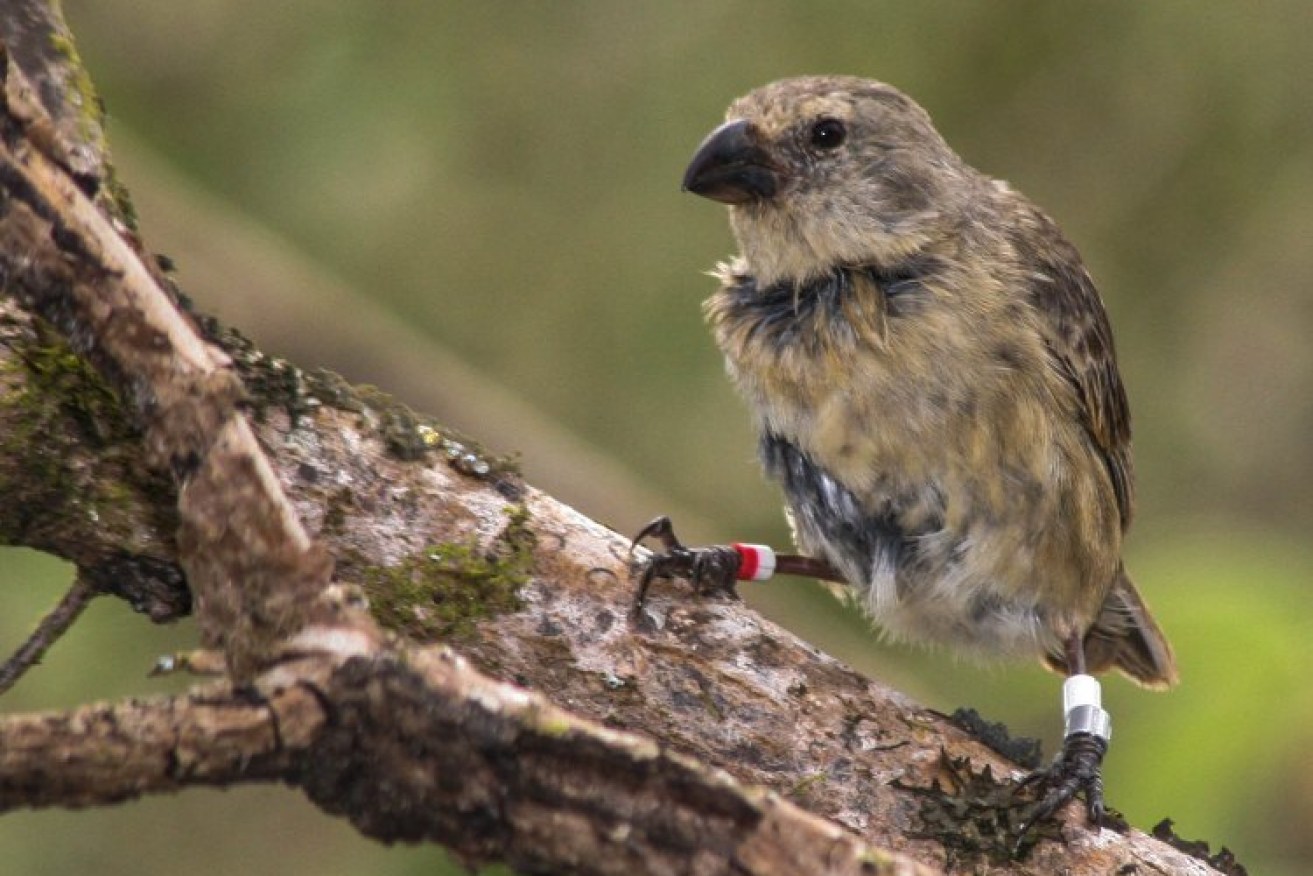
Boundaries blur for Darwin’s finch species

A Medium Tree Finch on the Galapagos island of Floreana
One of the several species of Darwin’s Galapagos tree finches – the birds famed for their role in forming the theory of evolution – is in danger of disappearing, according to a Flinders biologist.
Professor Sonia Kleindorfer says that interbreeding with a different species, combined with the attacks of a parasitic blood-sucking fly larvae, is contributing to the “collapse” of the medium tree finch species, which is confined to the island of Floreana.
Crossbreeding by females of the medium tree finch (Camarhynchus pauper) with the males of a smaller, more common species C parvulus is resulting in increasing numbers of hybrid birds and the blurring of boundaries between the two populations.
The findings by Professor Kleindorfer and her colleagues are published in a paper in the March edition of American Naturalist.
The researchers found the rate of hybrids among Floreana’s small and medium finches had increased from 19 per cent in 2005 to 41 per cent in 2010.
Infestation by the fly larvae is particularly severe among the medium tree finches, Professor Kleindorfer said. The fly, Philornis downsi, spread to the Galapagos in the 1960s, and while the adult flies are harmless to the finches, their larvae crawl into the nasal passages of chicks and other sites on their bodies, resulting in either death or deformed airways in the survivors.
The ravages of the fly are likely to contribute to the comparative rarity of the medium finch, which in turn may help to explain the high rate of crossbreeding with the more populous smaller finches, Professor Kleindorfer said.
While biologists predict that rare species are more likely to crossbreed with common ones, there may also be other factors at work. Professor Kleindorfer says it is possible that smaller species have escaped the worst parasite-caused airway deformation and sing more compellingly than their medium counterparts to attract a mate.
There are also the consequences of human presence to consider. On other islands, it has been shown that the degradation of food sources by human activity has contributed to the rarity of finches, making them more likely to hybridise.
While undoing the divergence between the species that gave Darwin backing for his theory, the recent changes among the finches of Floreana are themselves another example of evolution at work, Professor Kleindorfer said.
“If the medium tree finches keep jumping the species border, their kind may eventually go extinct on Floreana, and perhaps something new will emerge from the crossbreeding,” she said.




